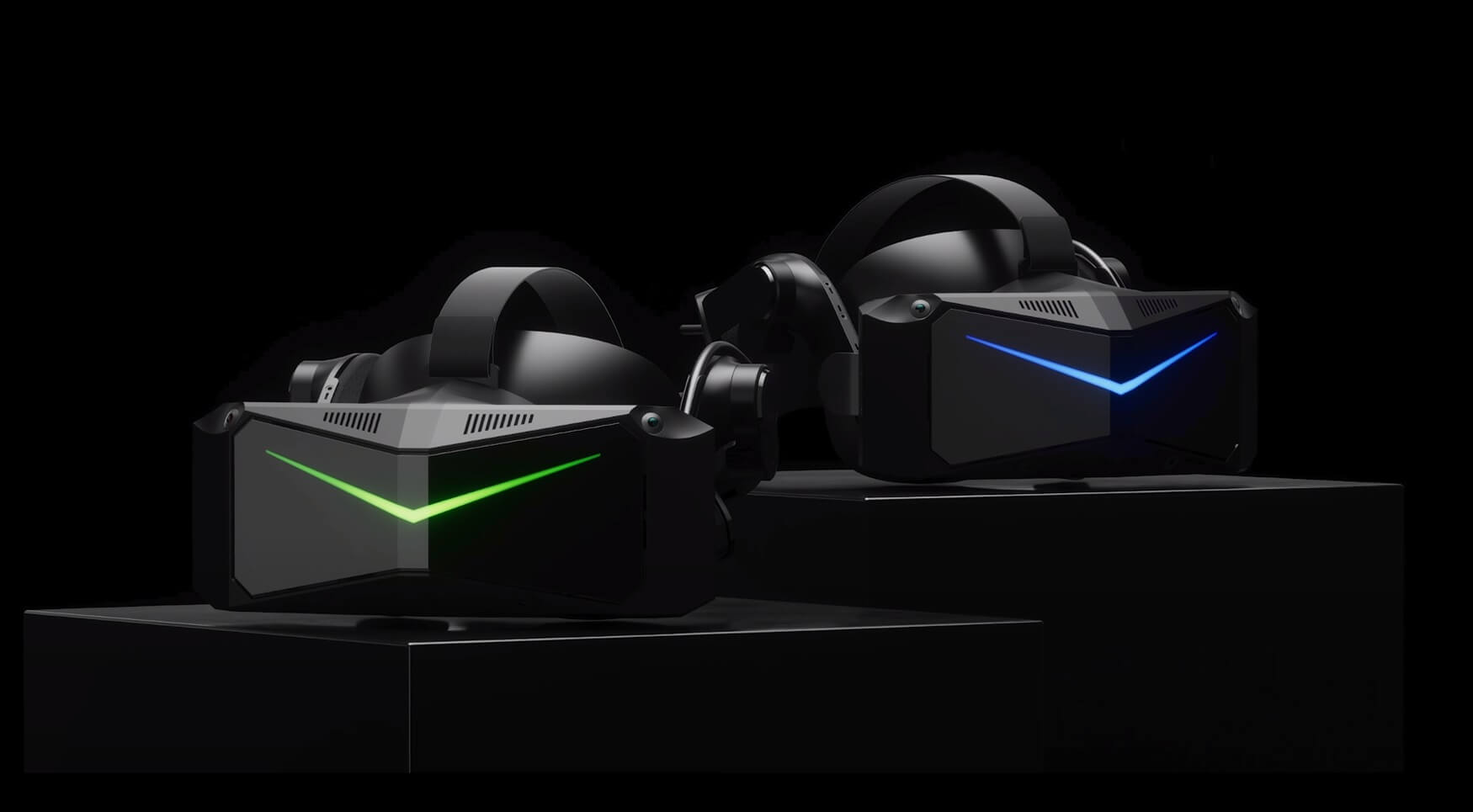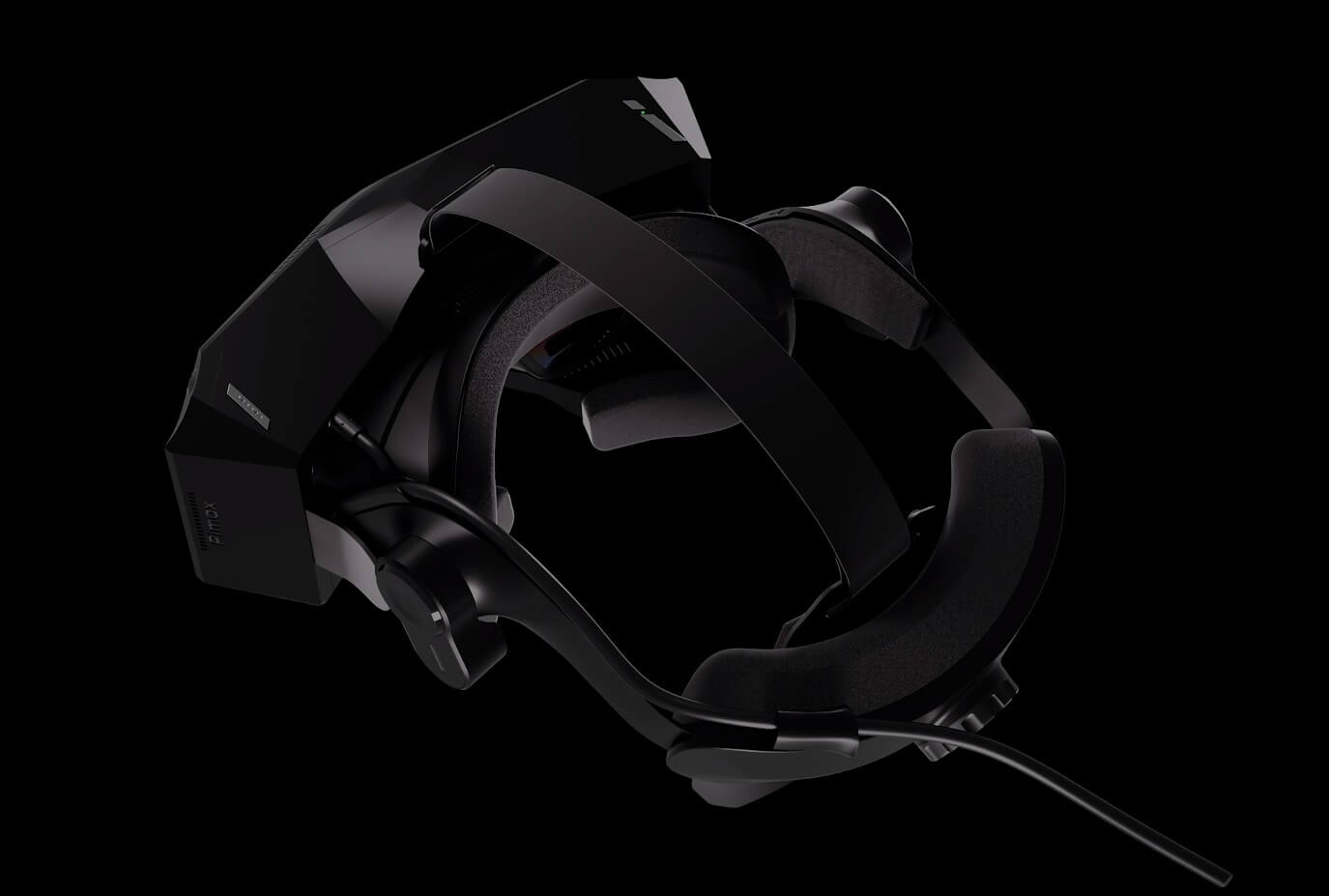As VR headsets keep increasing in popularity and adoption, the Primax Crystal PC VR headset series is definitely one of the best right now on the market, and the reason isn’t too difficult to understand. Primax recently unveiled the Crystal PC VR headset in two models, the Crystal Super and Crystal Light; as you may guess, the former (Super) is the higher variant, while the latter (Light) is the budget-friendly variant.

Both headsets have similar body design and aesthetics; the difference is in the specifications and features. The Pimax Crystal Super offers QLED and Micro-OLED displays with up to 4k pixels per eye resolution, while the Pimax Crystal Light stays with a QLED display and 2880 x 2880 PPE resolution. Both are PC VRs, and this article explains the differences between these two new VR headsets from Pimax.
Pimax Crystal Super PC VR Headset
The Crystal Super is Primax’s highest offering at the moment; it is designed to offer more flexibility than the native Primax Crystal PC VR headset, which started selling about a year ago. Primax Crystal Super boasts 4K resolutions per eye and a couple of sub-variants differentiated by the screen display: QLED and Micro-OLED. Looking at the price and features, it appears the Crystal Super headset would be contender for the Apple Vision Pro.
Features
1. Interchangeable Lenses
The Pimax Crystal Super comes with an interchangeable optical engine, which means that users can switch between the micro-OLED display and QLED as simply as they can change rechargeable batteries on the native Pimax Crystal. While the Micro-OLED display uses pancake lenses with up to 90Hz refresh rate and 4K resolution, the QLED is built into glass aspheric lenses but offers up to 120Hz and 4K resolution.
2. PC-Powered
Well, the Crystal Super is solely a PC VR headset and not a combined VR headset like the main Pimax Crystal. This makes the unit a lot more comfortable than the native Crystal headset, which faces a lot of backlash due to the combined operation modes.
3. Multi-Million Pixels
You’re getting stunning clarity with this headset; the Pimax Crystal Super is built with a total pixel count of 29.6 million, surpassing the 16.6 million pixels used for the main Pimax Crystal. In addition to this large pixel count, Pimax announces that the Crystal Super headset will offer a significantly bigger field of view—not yet specified.
4. External Cameras
Every variant of the Crystal Super is shown to support inside-out tracking with the aid of four external cameras. The headset also supports eye-tracking for automatic IPD adjustments and dynamic foveated rendering.
Price:
The base Pimax Crystal Super costs $1,800 and comes with a QLED screen. You will be adding $200 to that price if you want to get the Micro-OLED variant at $2,000, and opting for the two displays at a go will have you cough out $2,400.
Specs:
- Headset Type: PC VR
- Display: QLED+mini LED or Micro-OLED
- Resolution: 3840 x 3840 pixels per eye for both the QLED and micro-OLED versions.
- Screen Refresh Rate: 72Hz/90Hz/120Hz for the QLED version, 70Hz/90Hz for the micro-OLED version.
- Pixel Count: 29.5 million, 4K per eye
- Brightness: 200 nits for the QLED version; the micro-OLED specs are yet to be announced.
- Optics: Glass aspheric lenses (QLED), glass pancake lenses (micro-OLED)
- Audio: Built-in, available 3.5mm audio, 2x microphones
- Tracking: inside-out, lighthouse cover optional
Pimax Crystal Light PC VR Headset
No long stories here; the Crystal Light is the budget-friendly model in the Pimax Crystal PC VR lineup. It is the cheapest to buy and, as such, has the least specifications in the series. This PCVR also skipped most of the “impressive” features embodied by the Crystal Super variant. Of course, you can’t interchange the lenses on this one; it stays with the standard QLED screen and 120 Hz refresh rate.
Features:
1. QLED Panel with Optional Mini-LED
The Pimax Crystal Light PC VR comes standard with a QLED display panel that is fixed and not interchangeable with the Crystal Super. But then, this QLED display refreshes at up to 120 Hz and offers a clear 2880 x 2880 pixels per eye resolution. There is actually an option to get a mini-LED display panel, but that comes at a $200 additional cost for the base price of this headset.
2. PC-Powered
Pimax removed the battery at the back of the main Crystal headset and made the Crystal Light a solely PC-powered VR headset with no batteries at all. Your Pimax Crystal Light will remain powered on as long as it’s connected to a PC using the display port.
3. Onboard Audio and Wide FOV
The Crystal Light headset comes with up to 125 degrees of horizontal field of view and 35 PPD. Also, the headset features integrated audio, with microphones strategically integrated around the strap and front panel.
4. Tracking
Well, the Crystal Light also came with markerless inside-out tracking handled by quadruple fisheye cameras and 6DoF Touch-like tracked controllers, but it does not support eye tracking.
Price:
You’re getting the Crystal Light PCVR for less than half the price of the main Crystal headset. Yes, the Crystal Light costs just $700 while offering a 3K QLED display and 120Hz refresh rate. If you need to get a dimmer display, get the Mini-LED version, which costs an additional $200.
Specs:
- Headset Type: PC VR
- Display: QLED (optional mini-LED)
- Resolution: 2880 x 2880 pixels per eye
- Screen Refresh Rate: 72Hz/90Hz/120Hz
- Pixel Count: 16.6 million
- Optics: Glass aspheric lenses
- Audio: Built-in, available 3.5mm audio, 2x microphones
- Tracking: Inside-out, 4 cameras, 6 DoF controllers
Comparison Table
| Pimax Crystal Headset | Light | Super |
| VR Headset Type | PC VR | PC VR |
| Panel | Aspherical glass lenses | Aspherical glass lenses (QLED) or Pancake lenses |
| Lenses Available | QLED (optional Mini-LED) | QLED+mini-LED and Micro-LED |
| Interchangeable Lenses | Not supported | Supported |
| Refresh Rate | 70Hz to 120Hz | 70Hz to 120Hz (QLED), 70Hz/90Hz (Micro-LED) |
| Pixels Per Eye (PPE) | 2880 x 2880 | 4k (3840 x 3840) |
| Field of View (FoV) | 125 degrees, horizontal | 130 degrees, horizontal |
| Battery Inclusion | No | No |
| Audio | Integrated | Integrated |
| 3.5mm Jack | Yes | Yes |
| Microphone | 2 | 2 |
| Price U$D (Base Model) | $700 | $1,800 |

Note: These new Pimax Crystal headset variants are not yet available for sale. You can reserve an order for the Crystal Super via the official reservation page. The expected shipping date for these headsets is Q4 2024.
Conclusion
Obviously, the Crystal Light is for budget PC VR gamers looking to get an outstanding display and seamless performance, while the Crystal Super will look to contend with the Apple Vision Pro, owing to the fact to the fact that it offers more clarity (pixels) and cutting-edge technologies (interchangeable optics).
Both the Crystal Light and Crystal Super can work on any computer, literally, if you install the Pimax software. But then, choosing between these PC VR headsets comes down to budget and personal preference. You can read more about these headsets on the official Pimax website.
